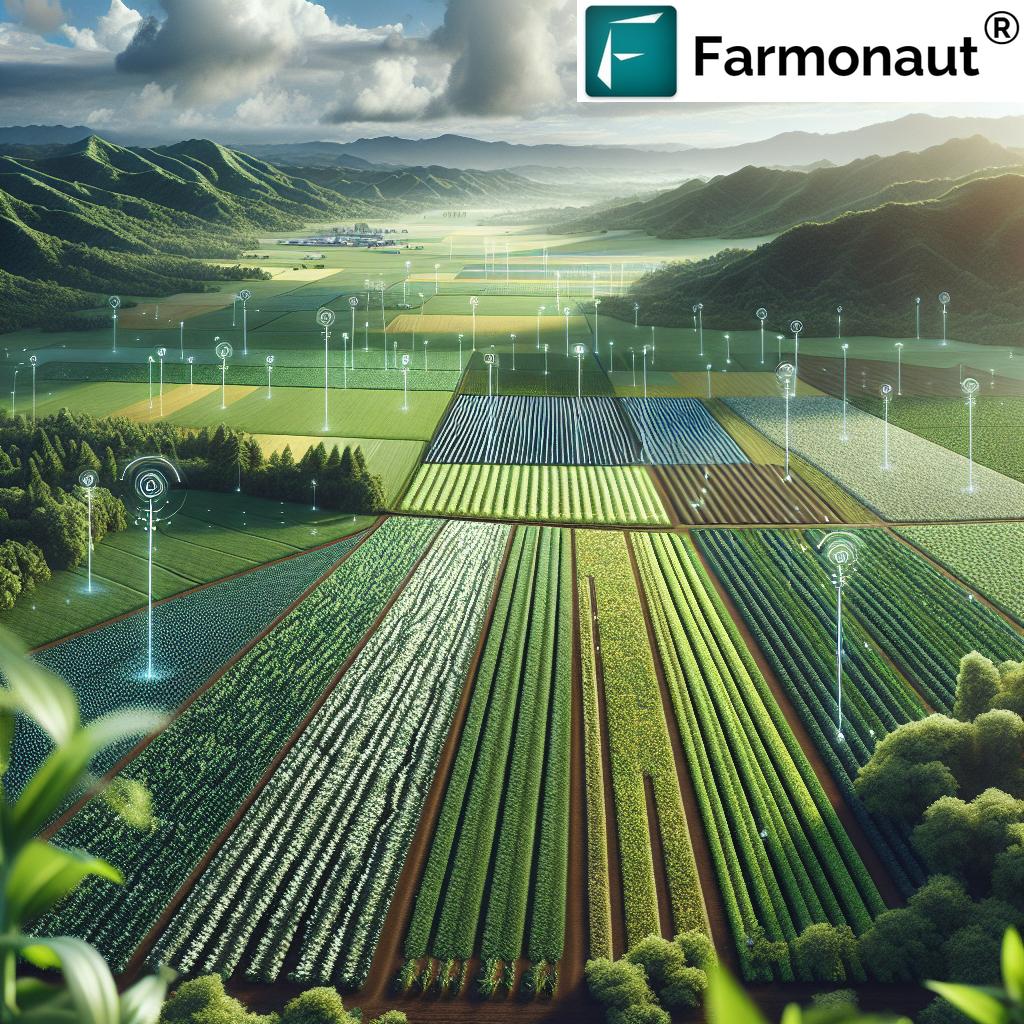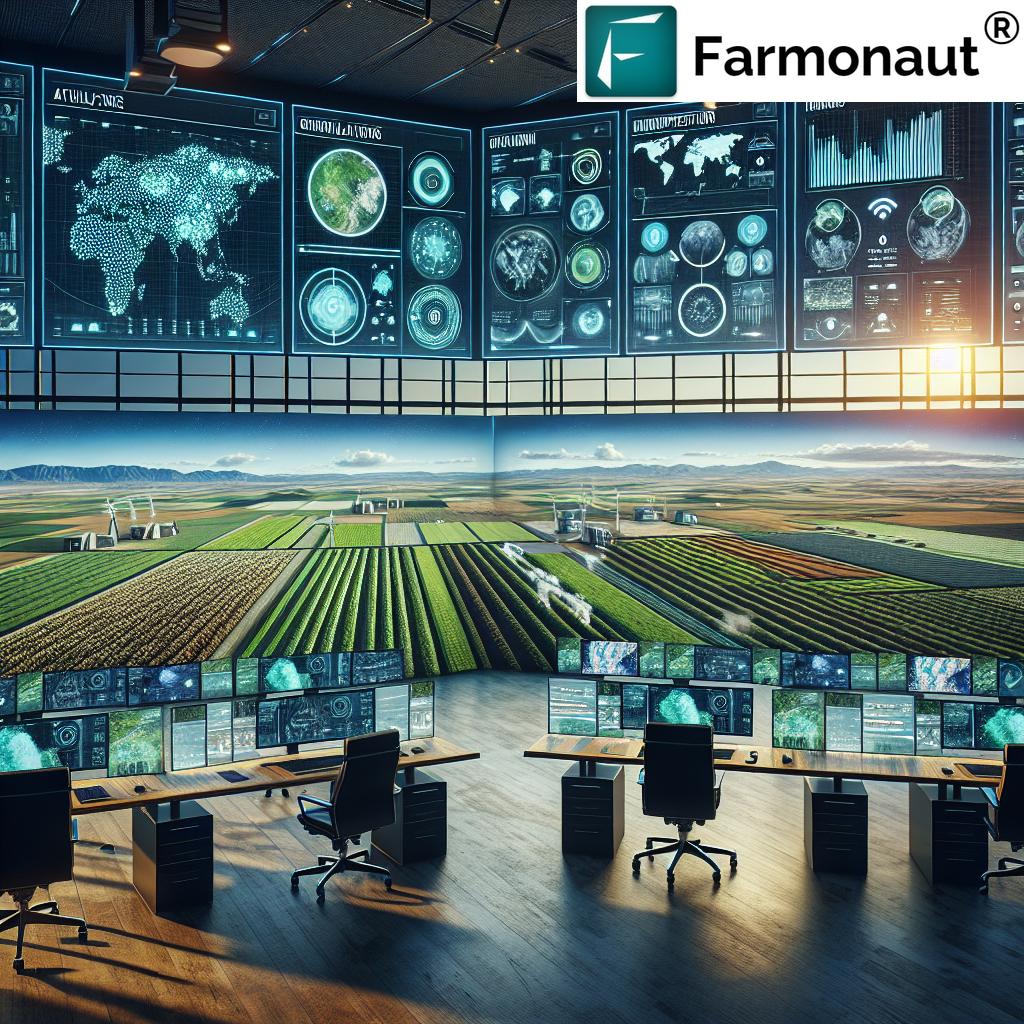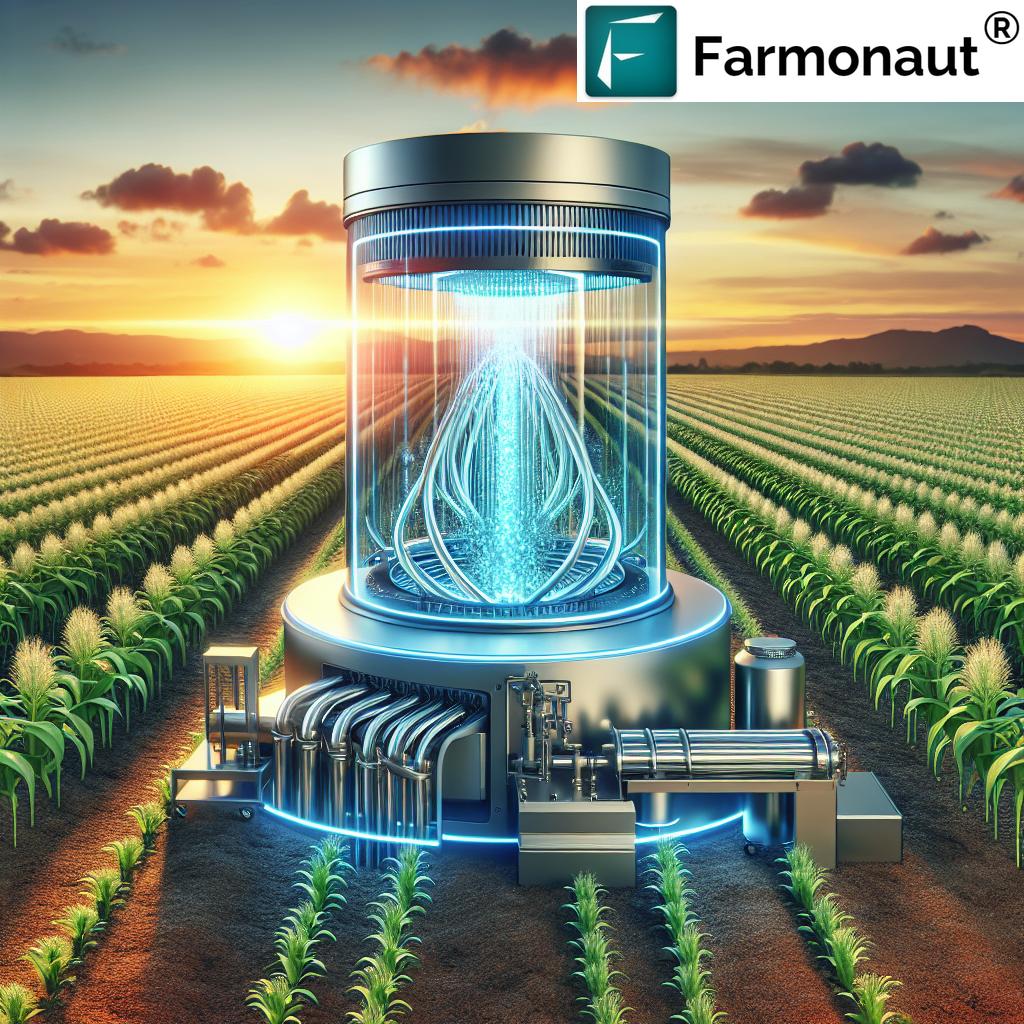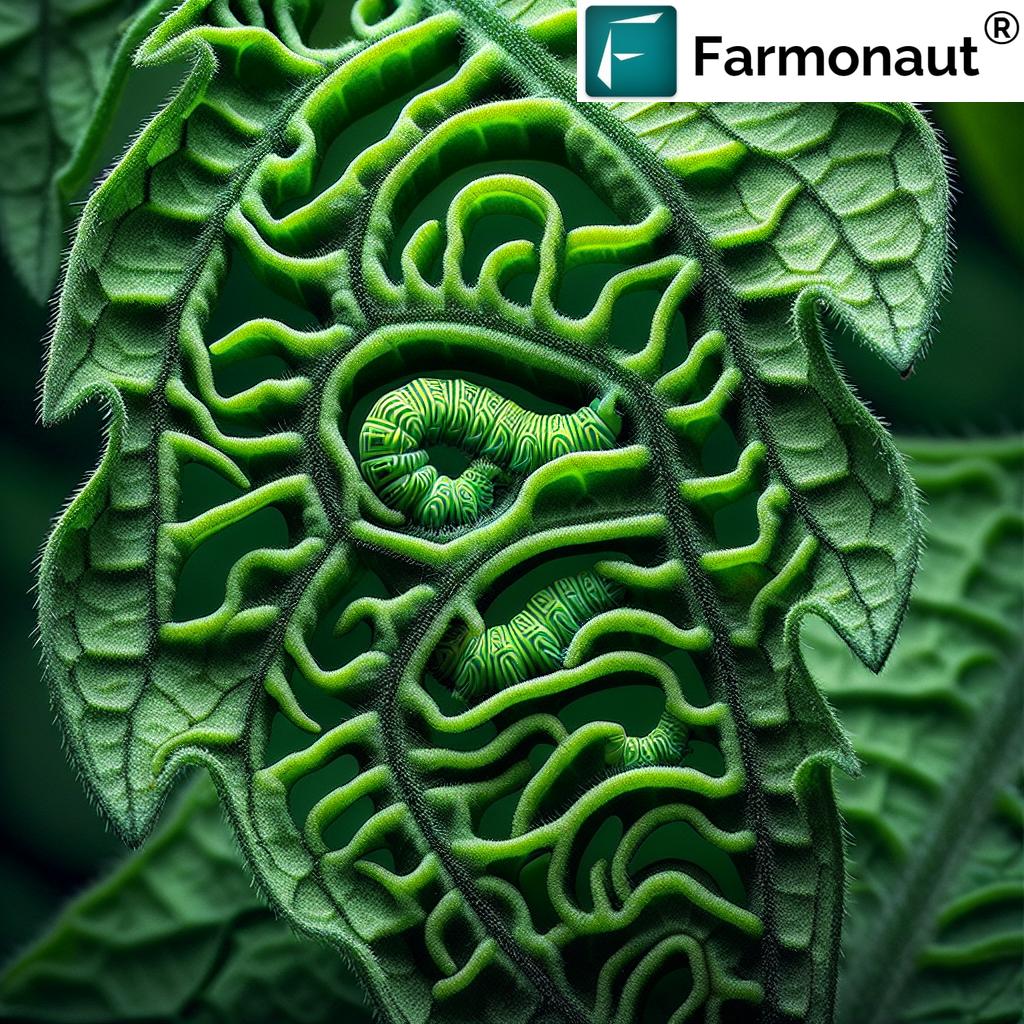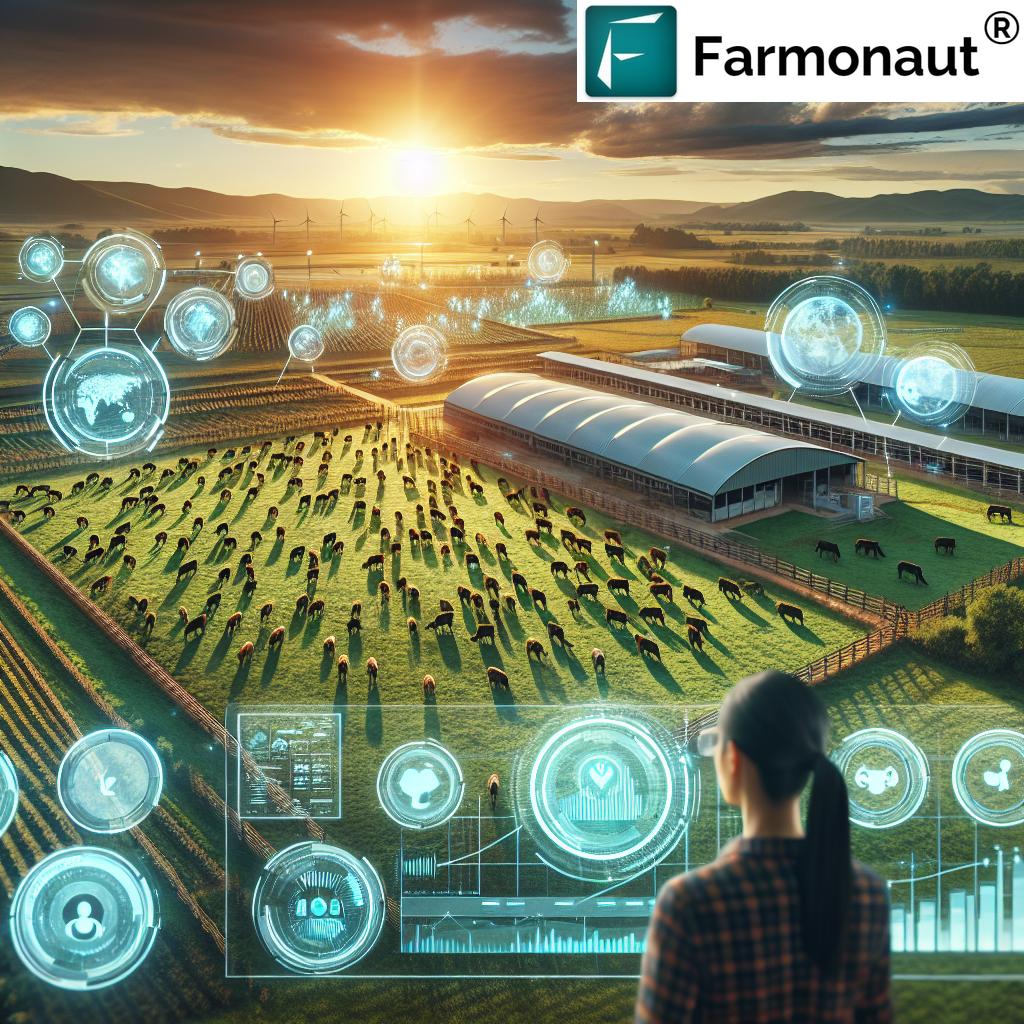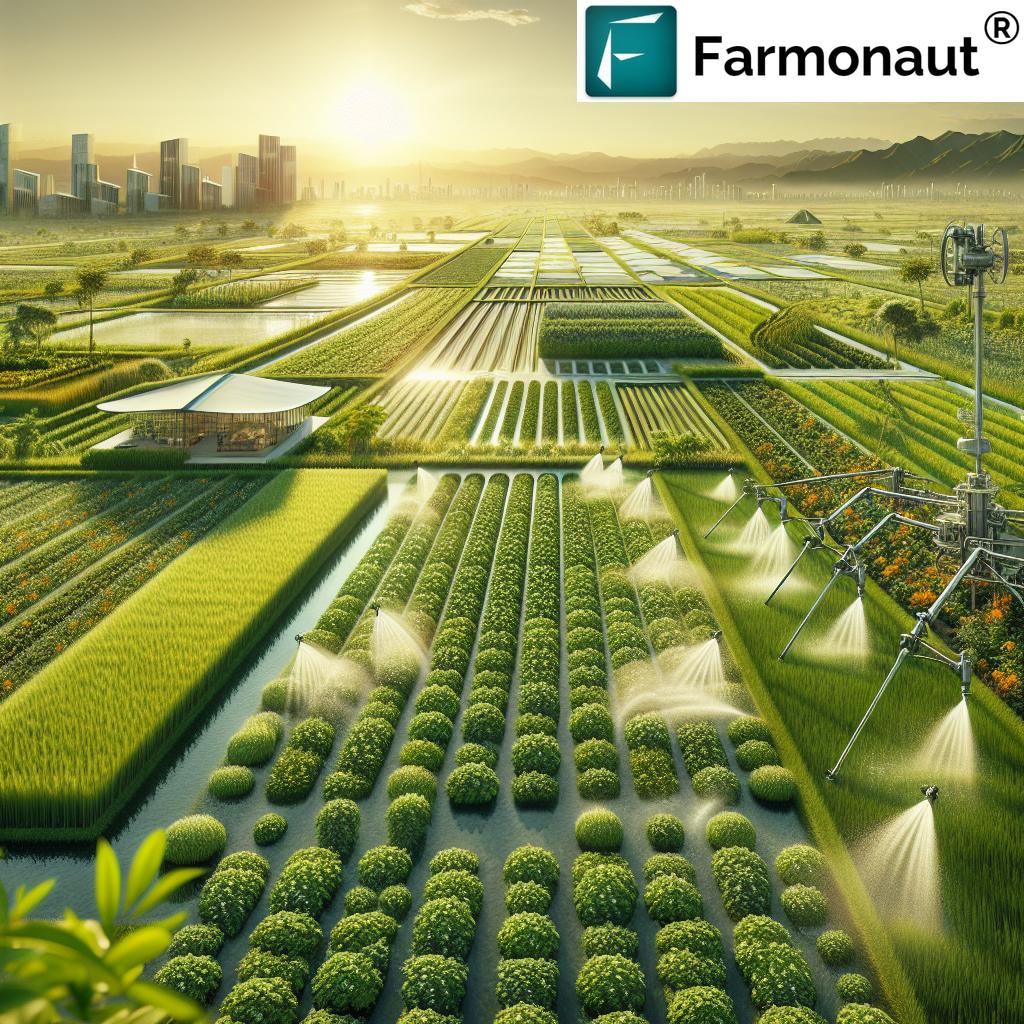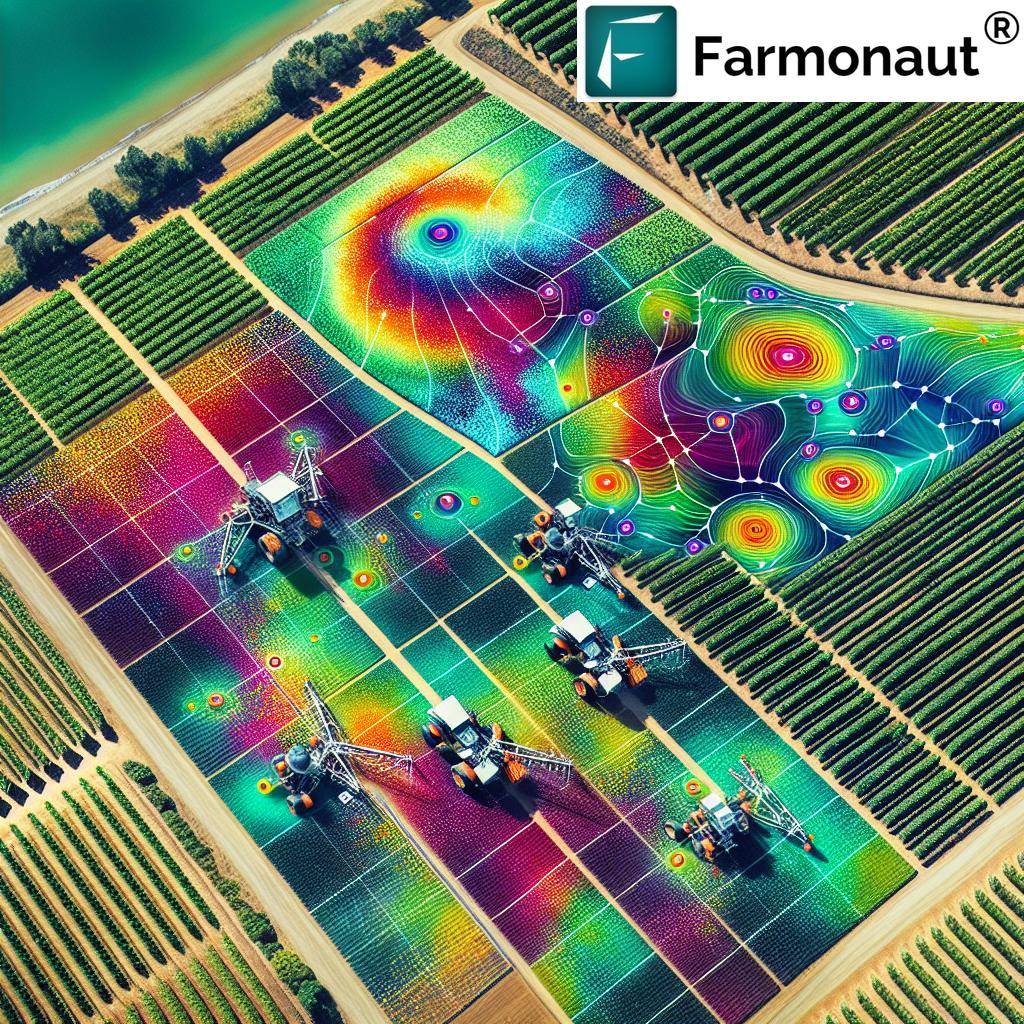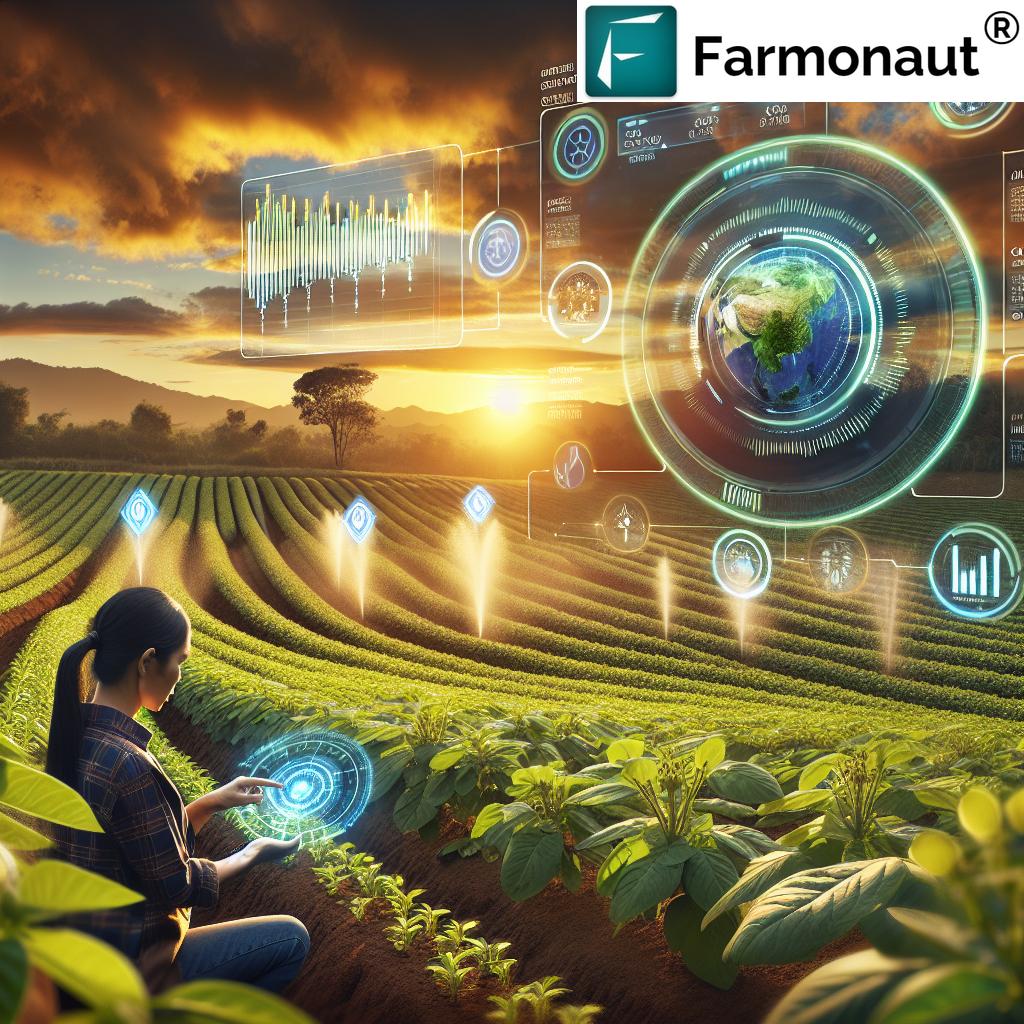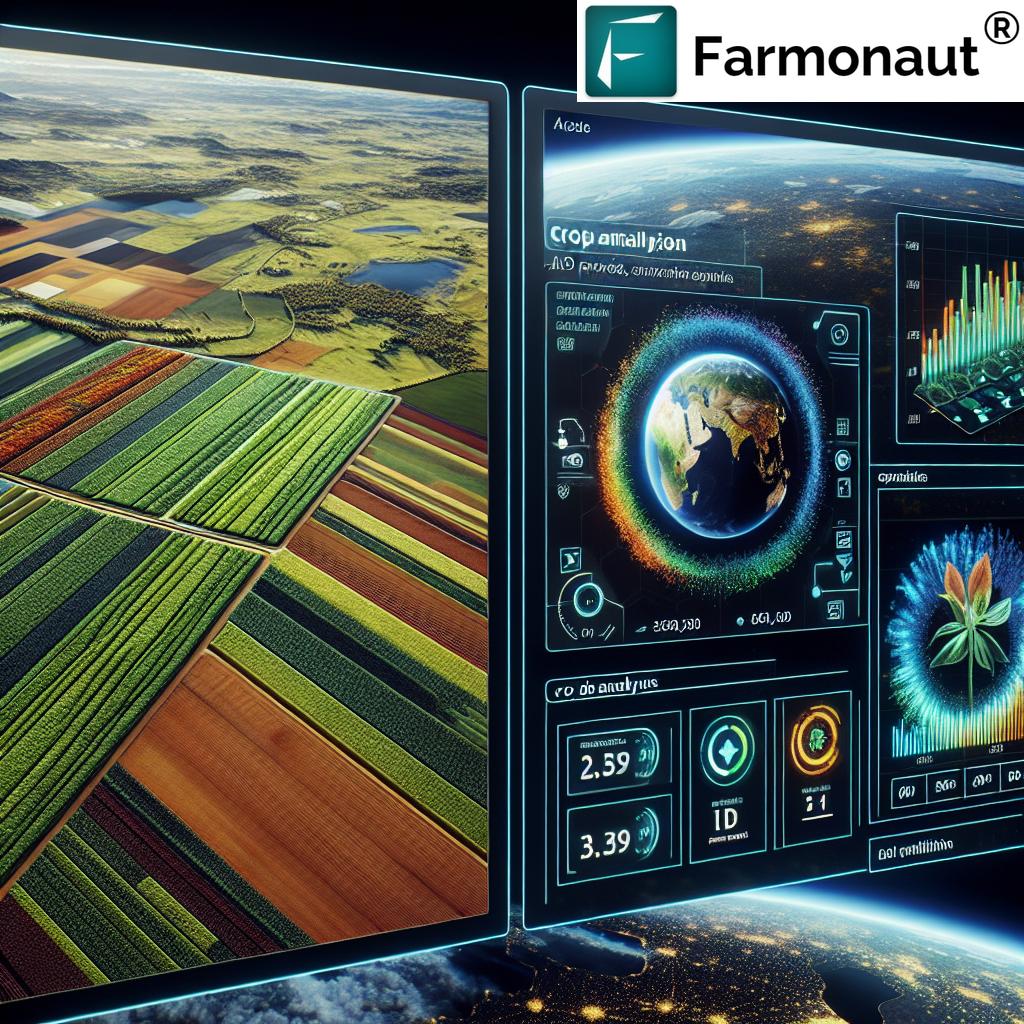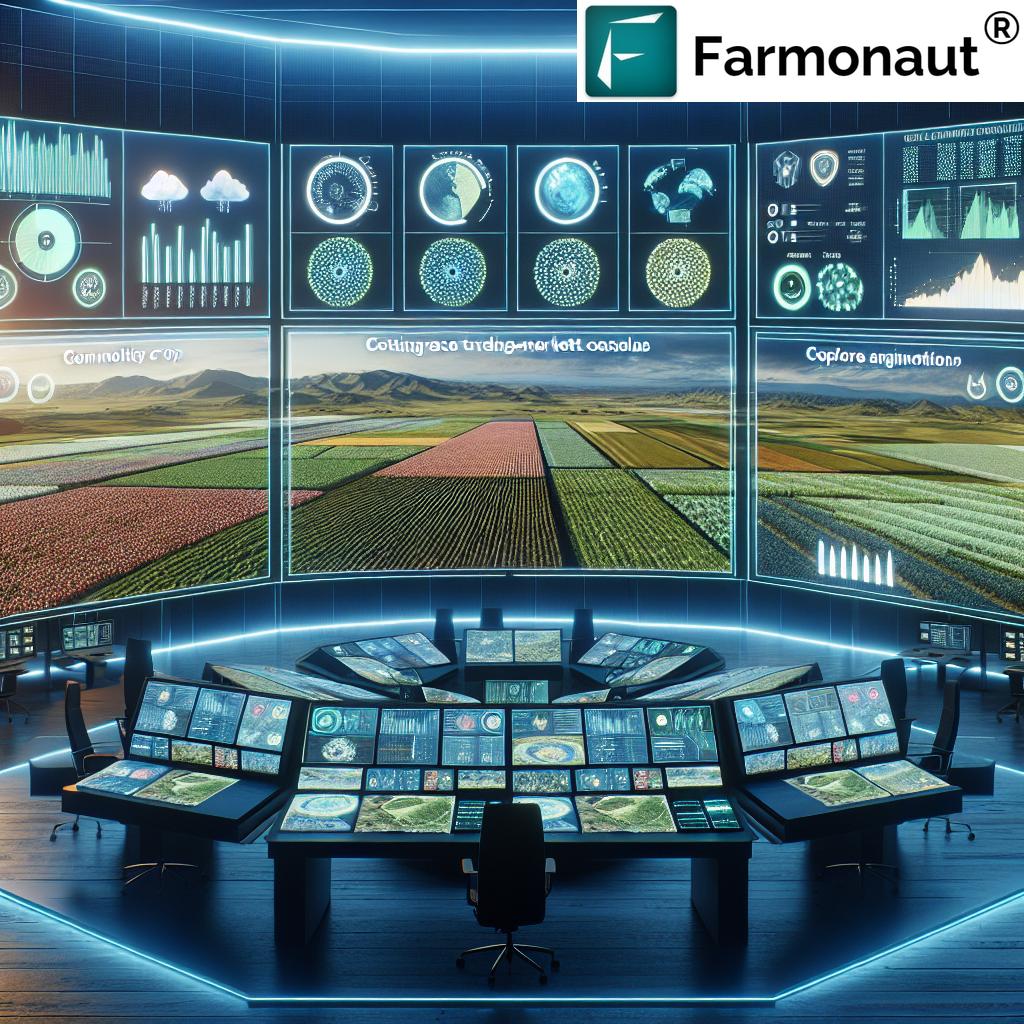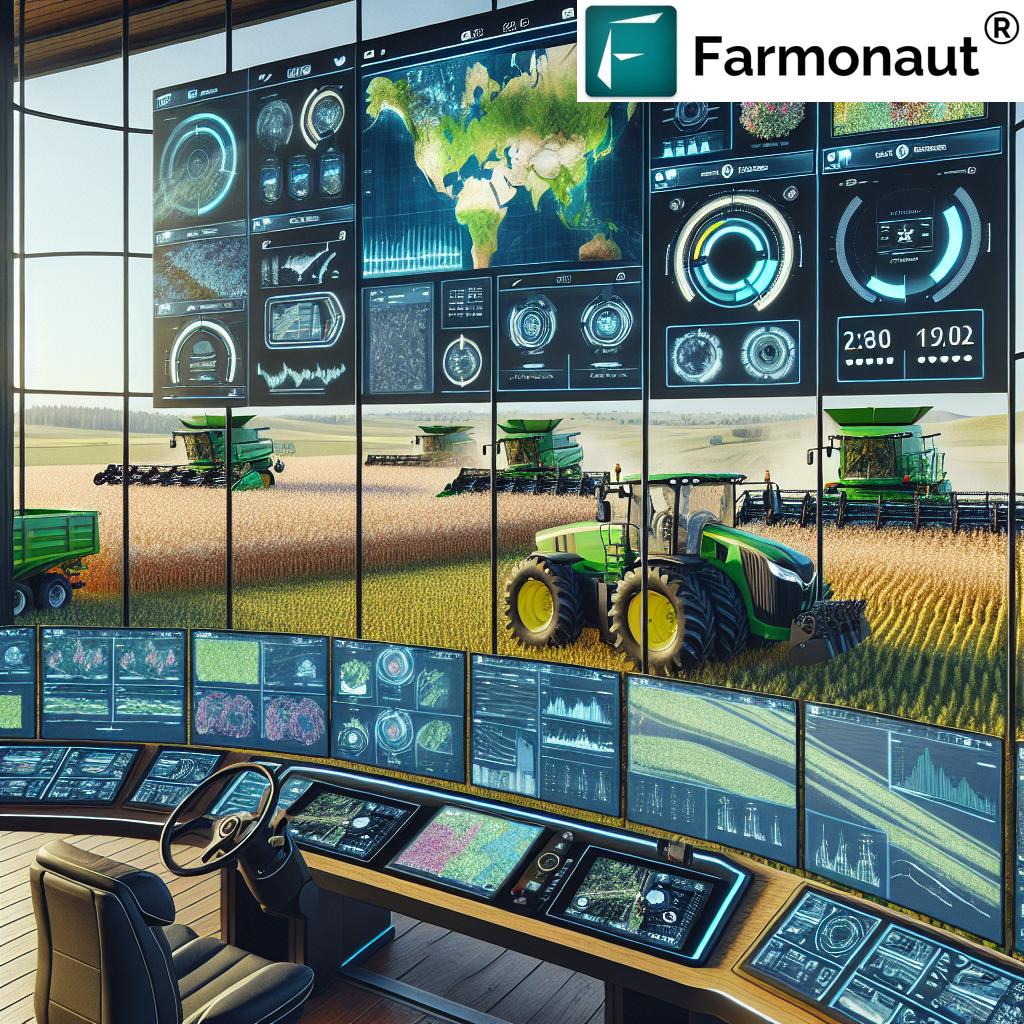Smart Farming and Precision Agriculture: 7 Yield Boost Tips
Meta Description: Smart Farming and Precision Agriculture: Revolutionizing the Future of Agriculture. Discover actionable tips to improve yields, sustainability, and efficiency with advanced smart farming technologies including drones, sensors, AI, and data analytics.
Table of Contents
- Summary: How Smart Farming Revolutionizes Agriculture
- Trivia: Smart Farming Boosts Yields
- Understanding Smart Farming & Precision Agriculture
- Top 7 Smart Farming Technologies for Yield Boost
- Comparative Table: Yield Improvements with Smart Tech
- Farmonaut’s Contributions to Precision Agriculture
- Tip 1: Drones in Agriculture – Real-Time Aerial Crop Monitoring
- Tip 2: Crop Monitoring with IoT Sensors
- Tip 3: Artificial Intelligence in Agriculture
- Tip 4: Variable Rate Technology (VRT) and Application
- Tip 5: Robotics & Automation – Reducing Labor Costs
- Tip 6: Remote Sensing in Farming & Satellite Imaging
- Tip 7: Data Analytics for Informed Farm Management
- Trivia: Efficiency & Sustainability Gains
- Benefits: Why Adopt Smart Farming Technologies?
- Challenges in Adopting Precision Agriculture
- Recent Initiatives & Global Trends
- Farmonaut Subscription Plans
- Frequently Asked Questions (FAQ)
- Conclusion
Summary: How Smart Farming Revolutionizes Agriculture
With the world’s population surging and climate change putting pressure on the agricultural sector, a transformative shift is underway. Smart farming and precision agriculture are revolutionizing crop productivity, sustainability, and efficiency. Using advanced technologies like drones, sensors, and artificial intelligence, modern farming is optimizing the use of vital inputs such as water, fertilizers, and nutrients. This integration of technologies empowers farmers to achieve better yields, less waste, and increased environmental stewardship. From data analytics to remote sensing, today’s agricultural practices are built for the future.
Understanding Smart Farming & Precision Agriculture
Smart farming, sometimes referred to as precision agriculture, is an innovative approach that integrates technology into agricultural processes to optimize resource use and improve crop yields. Unlike conventional methods, where inputs like fertilizer and water are applied uniformly, precision farming employs data-driven decision-making for targeted application. This means only using what’s needed, when and where it’s needed—a game-changer for efficiency, sustainability, and reducing costs.
This revolution is fueled by sensors, IOT devices, AI and machine learning algorithms, and aerial imaging from UAVs (drones). Combined, these technologies enable farmers to monitor plant health, soil conditions, nutrient levels, and even forecast planting and harvesting windows with streamlined precision.
As Wikipedia notes, smart farming also means leveraging real-time data and remote sensing in farming to manage crops with a level of accuracy never before possible.
Top 7 Smart Farming Technologies for Yield Boost
Here are the seven key smart farming technologies revolutionizing the agricultural sector today:
- Drones in Agriculture (UAVs & Remote Sensing)
- Soil & Crop Monitoring with IoT Sensors
- Artificial Intelligence & Machine Learning
- Variable Rate Technology (VRT)
- Robotics & Automation
- Remote Sensing & Satellite Imaging
- Data Analytics for Farm Management
Each of these technologies offers unique advantages for improving crop yields, streamlining resource use, and supporting sustainable farming practices.
Comparative Table: Yield Improvements with Smart Tech
| Technology | Estimated Yield Improvement (%) | Key Benefits | Typical Applications |
|---|---|---|---|
| Drones in Agriculture | 8–20% | Aerial crop monitoring, rapid disease/pest detection, improved management | Field scouting, plant health assessment, spraying |
| Soil & Crop IoT Sensors | 10–18% | Real-time soil moisture & nutrient data, optimized irrigation | Soil health monitoring, irrigation & fertilization planning |
| Artificial Intelligence & Machine Learning | 12–20% | Predictive analytics, automated detection of issues, decision support | Yield prediction, pest management, resource optimization |
| Variable Rate Technology (VRT) | 10–15% | Precise input placement, reduced fertilizer/pesticide waste | Fertilizer & seed application, site-specific treatments |
| Robotics & Automation | 10–16% | Reduced labor costs, increased operational efficiency, 24/7 operation | Planting, harvesting, weeding |
| Remote Sensing & Satellite Imaging | 10–20% | Large-scale monitoring, weather/resilience insights, health assessments | Regional crop surveys, drought/stress detection |
| Data Analytics | 8–14% | Aggregates and analyzes multi-source data for precise decisions | Farm management, resource allocation, actionable insights |
This table offers a quick comparison for farmers to make data-driven decisions on adopting suitable smart farming technologies for their specific crops and fields.



Farmonaut’s Contributions to Precision Agriculture
We at Farmonaut empower farmers and agribusinesses worldwide to access precision agriculture with unparalleled affordability and convenience. By integrating satellite imagery, artificial intelligence, blockchain, and machine learning within our android, iOS, and web platforms, we help users monitor crop health in real time, manage inputs and resources efficiently, and ensure end-to-end traceability for all agricultural production.
Key offerings from Farmonaut include:
- Satellite-Based Crop Health Monitoring: Our technology provides multispectral imaging to assess vegetation health, soil moisture, and more, enabling farmers to make informed, timely decisions on irrigation, fertilizer use, and pest management.
- Jeevn AI Advisory: Using cutting-edge AI, we offer personalized, real-time farm advice, weather forecasts, and strategic recommendations to maximize productivity and minimize waste.
-
Blockchain Product Traceability: Ensure complete security and transparency across the food chain with blockchain-enabled verification from farm to consumer.
Explore Farmonaut’s Product Traceability Solution -
Fleet and Resource Management: Agribusinesses can reduce operational costs through effective fleet tracking and resource allocation.
Learn more about Fleet Management -
Carbon Footprinting: Our systems support sustainability by letting agribusinesses and farmers monitor and minimize their environmental impact, ensuring a greener future.
See Carbon Footprinting Use Cases -
API Access for Developers:
Integrate Farmonaut’s satellite and weather data directly into your own systems or research through our API.
Farmonaut API Access |
Developer Docs
Our mission is to make these advanced technologies available and affordable to every farmer and agri-operator—regardless of scale or region. Try our large-scale farm management solutions for plantation, forest, or industrial agriculture:
Discover our Large-Scale Farm Management Platform
Tip 1: Drones in Agriculture – Real-Time Aerial Crop Monitoring
Drones, also called Unmanned Aerial Vehicles (UAVs), are transforming field operations. By flying over fields with multispectral cameras, drones capture high-resolution images that reveal precise plant health, diseases, growth patterns, and even differentiate between weed and cultivated plants. This aerial monitoring unlocks dramatic increases in efficiency and operational sustainability by:
- Rapidly identifying problem areas for immediate interventions
- Reducing unnecessary pesticide/fertilizer application
- Optimizing crop yields through timely action
- Supporting food security and limiting environmental impacts
Drones synergize with remote sensing in farming and IoT devices, delivering crucial images and data to farmers for everyday management.
Interested in integrating drone data with your satellite monitoring? Our farm management app lets you combine and visualize all your fields’ health trends.
Tip 2: Crop Monitoring with IoT Sensors
Internet of Things (IoT) sensors are the backbone of precision agriculture at ground level. These compact devices are embedded directly in fields to collect continuous readings on:
- Soil moisture availability
- Soil nutrient and temperature levels
- Weather and microclimatic conditions
Such real-time data enables:
- Targeted irrigation based on actual plant needs
- Efficient fertilizer application, minimizing waste
- Monitoring for early signs of plant stress or disease
According to Iberdrola, sensors are vital in precision strategies, ensuring nutrient management fits the actual needs of each area within a field.
Tip 3: Artificial Intelligence in Agriculture
Artificial intelligence (AI), teamed with machine learning, is supercharging agricultural productivity. AI-powered algorithms analyze data collected from drones, sensors, and satellites. Their predictive power means:
- Early detection of diseases, pests, and unhealthy plant patterns
- Forecasting yields based on multi-year data and current environmental conditions
- Optimizing planting schedules and harvest windows
- Automating weed/pest identification and targeted control applications
- Advanced resource management for irrigation, fertilizers, and inputs
We deploy AI through the Jeevn AI Advisory System, which translates complex data into clear, actionable advice for farmers—enabling on-the-go decisions that drive sustainability and yield.
Tip 4: Variable Rate Technology (VRT) and Application
Variable Rate Technology (VRT) is the essence of precision farming. VRT equipment can apply water, fertilizers, and pesticides at different rates within a single field, based on real-time data about soil nutrient status and plant health. Key benefits include:
- Targeted input application reduces waste and environmental pollution
- Promotes sustainability by reducing runoff into water systems
- Maximizes yields by focusing management efforts where they’re most needed
Adopting VRT is a practical move for farmers aiming to improve operational efficiency and minimize costs.
Tip 5: Robotics & Automation – Reducing Labor Costs
Automation is driving next-level efficiency and output in the agricultural sector:
- Self-driving tractors and robotic harvesters can work day and night
- Automated planters and weeders streamline repetitive, labor-intensive processes
- Labor costs are drastically reduced, and the scope for human error lessens
While robotics demand upfront investment, over time the cost savings and reliability lead to rapid returns for commercial farms.
For integrated resource and fleet management, explore our robust tools for agriculture businesses: Fleet Management Platform.
Tip 6: Remote Sensing in Farming & Satellite Imaging
Remote sensing and satellite imagery represent the future of broad-scale, data-driven agricultural management. Farmers and governments use satellite data to:
- Map crop areas, analyze vegetation health indices (e.g., NDVI)
- Track changes in growth patterns, identify stress, and plan interventions
- Manage large-scale farms efficiently, including nationwide crop forecasts
- Strengthen food security through early detection of drought, floods, or other challenges
Our satellite-based system is accessible via web, mobile apps, and API integrations.
Tip 7: Data Analytics for Informed Farm Management
The foundation of precision agriculture is high-quality data. Advanced agriculture data analytics platforms aggregate information from drones, IOT sensors, satellites, and local weather stations. Insights derived from this integrated data enable farmers to:
- Track soil health, moisture, temperature levels, and nutrient availability
- Match crop varieties and inputs to field micro-environments
- Cut input waste by targeting only the areas that need it
- Identify long-term production patterns to predict future risks and schedule resource allocation
With satellite-based, AI-driven analytics, users create a dynamic, data-rich feedback loop between technology and practices for continual improvement in yields and sustainability.
Benefits: Why Adopt Smart Farming Technologies?
Integrating smart farming technologies has several measurable benefits that directly impact your bottom line and the planet:
- Increased Productivity: Precision monitoring and rapid interventions enable higher crop yields and improved food quality.
- Enhanced Sustainability: Minimize waste, lower pollution, and preserve biodiversity by using inputs more efficiently.
- Lower Costs: Reduce fertilizer, pesticide, water, and labor expenses through data-driven resource use.
- Data-Driven Management: Empower farmers to make smarter decisions based on real-time field conditions.
- Improved Traceability & Food Security: Blockchain-based data ensures security and transparency across the entire agricultural supply chain.
Smart farming is not only about maximizing production efficiency, but also about reducing environmental impact and ensuring long-term sustainability.
Challenges in Adopting Precision Agriculture
Even with all these advances, there are challenges that hinder widespread adoption—especially in less-developed areas:
- High Initial Investment: Equipment (drones, sensors, robotics), software, and training represent upfront costs that may deter small farmers.
- Technical Expertise: Understanding and operating advanced technologies requires capacity-building and ongoing training.
- Data Security & Privacy: Safeguarding data collected from fields is essential, especially with blockchain and cloud-based systems.
- Connectivity Issues: Many smart farming technologies rely on robust internet connectivity, which may lag behind in some rural areas.
The good news: Innovations like Farmonaut’s satellite-based app are designed precisely to lower these barriers, particularly in China, India, and regions with vast agricultural production areas.
Recent Initiatives & Global Trends
Governments and industry leaders are rapidly scaling up smart farming initiatives:
- At CES, new agriculture technologies such as advanced sensors and drone-based monitoring solutions are capturing global attention (AP News).
- China is rolling out a five-year smart farming plan to digitize its agricultural industry and boost food output (Reuters).
- Experts are exploring how AI and machine learning can transform entire societies by improving resource use, sustainability, and security (Financial Times).
As technologies mature and become more accessible, the future of farming lies in embracing data-driven, environmentally responsible practices.
Farmonaut Subscription Plans
We offer flexible, cost-effective subscription models for all types of farmers and agribusinesses. Choose the level of satellite monitoring, weather analytics, and advisory services that matches your needs.
Explore our current pricing and get started with precision farming today:
Frequently Asked Questions (FAQ)
What is “precision agriculture”?
Precision agriculture is the practice of using advanced technology—like drones, sensors, satellite imagery, and data analytics—to optimize the use of inputs and maximize crop yields, while minimizing waste and environmental impact.
How do drones in agriculture help improve productivity?
Drones provide real-time, high-resolution aerial images for rapid field assessment. This enables farmers to quickly spot areas affected by pests, disease, or water stress, and take precise action to improve yields.
Is smart farming affordable for small and medium farmers?
Absolutely. Solutions like Farmonaut leverage satellite imagery and cloud-based services to offer affordable precision agriculture, making the benefits accessible to farmers of any scale.
What data security measures are used in agricultural data analytics?
Farmonaut employs robust data protection using secure cloud infrastructure and blockchain-based traceability, ensuring sensitive farmer and crop data remains protected at all stages.
How does Farmonaut’s crop monitoring differ from regular IoT sensors?
While IoT sensors track data on the ground, Farmonaut integrates multispectral satellite imaging with AI analysis to deliver large-scale, real-time insights—often without the need for hardware deployment in fields.
Can smart farming technologies help reduce environmental impact?
Yes, optimizing input use through precision technologies means less fertilizer, water, and pesticide waste, leading to cleaner waterways, reduced greenhouse emissions, and preserved biodiversity.
Are Farmonaut’s applications mobile-friendly?
Definitely. Our solutions are fully accessible via Android, iOS, and web interfaces, so farmers can access vital insights from anywhere, anytime.
Conclusion
The fusion of smart farming technologies and precision agriculture represents the most important shift in the world’s agricultural sector. When drones, sensors, AI, and remote sensing are properly integrated, farmers achieve higher productivity, efficient resource management, and sustainable food production to feed a growing planet challenged by climate change.
We at Farmonaut are committed to making these advanced technologies accessible and affordable—providing not just data, but actionable intelligence for daily farm management and long-term environmental impact reduction.
Ready to revolutionize your yields and resource efficiency? Download our app now:


